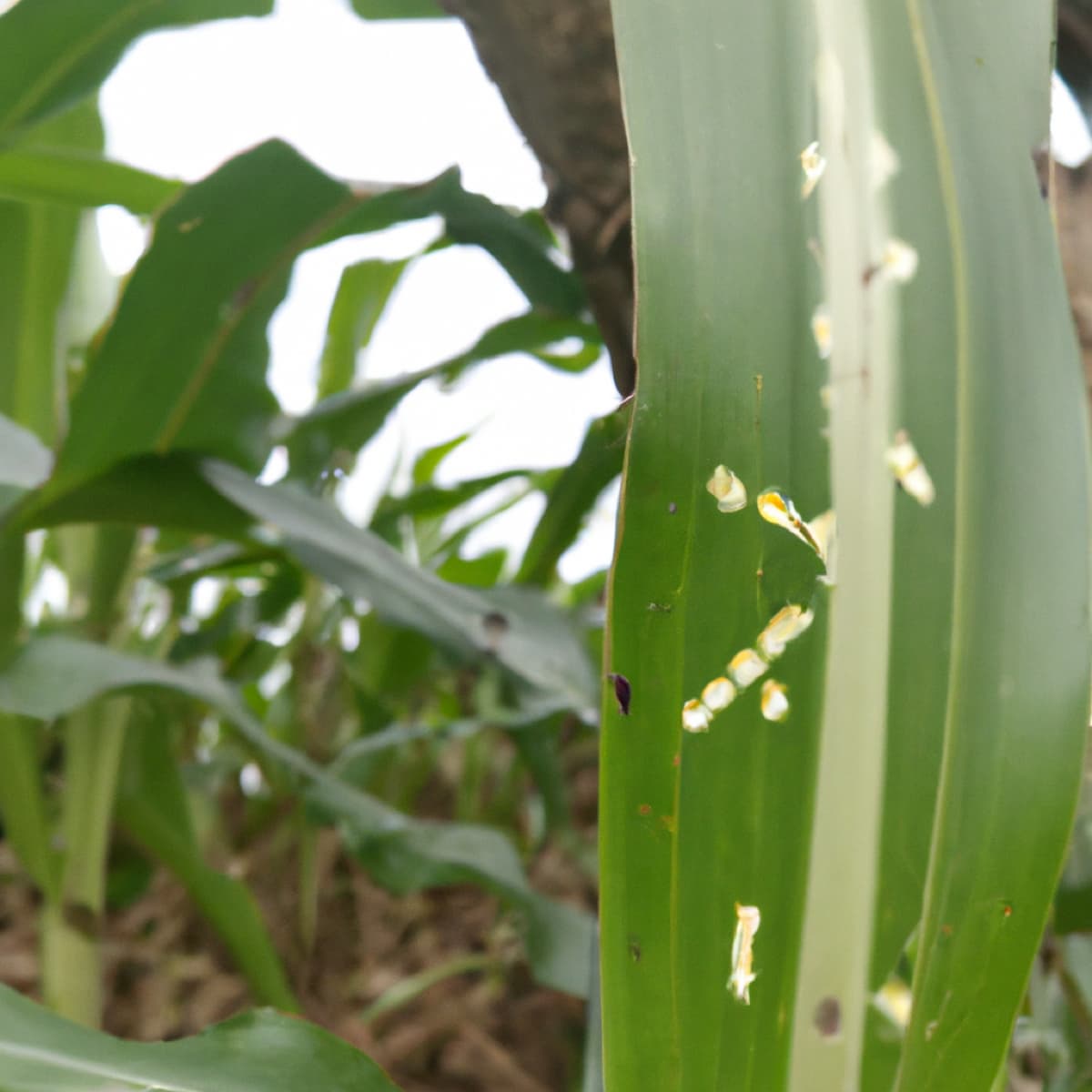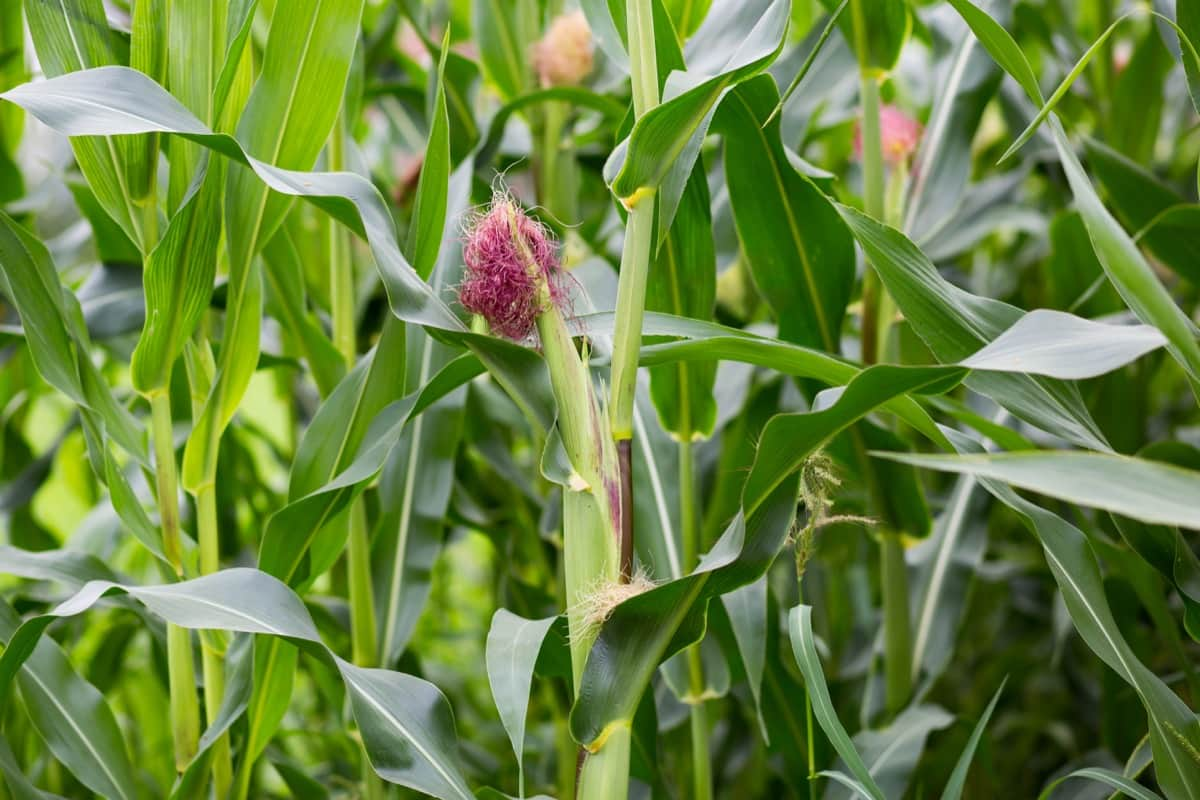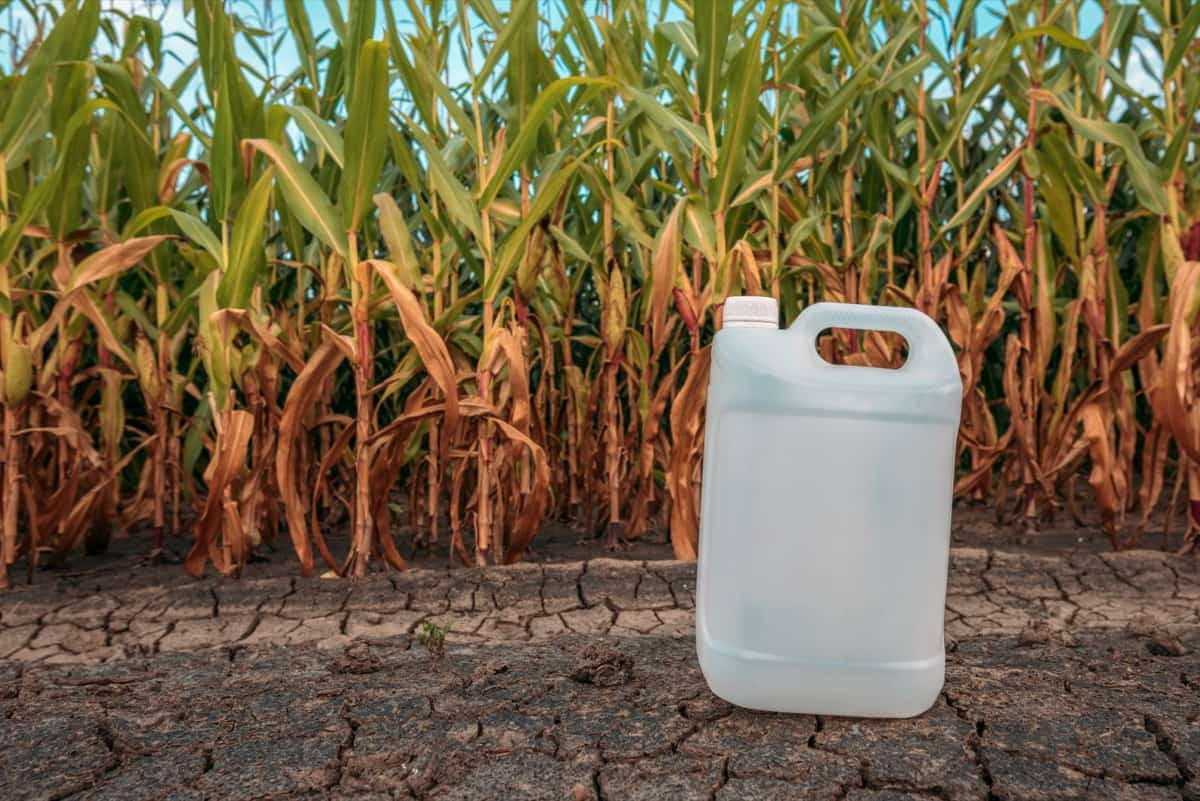Stem borers are pests that cause significant damage to maize crops, also known as corn, a staple food and important cash crop for millions of people worldwide. One of the most severe maize insect pests. Damage results in a dead heart, which renders the plant earless in extreme cases and may cause loss ranging from 20-80% in maize. Also, the uninfested fields yield 28% more harvest than infested fields. Let’s check out more information on Stem Borer management in Maize farming below.

Stem borers are the larvae of moths that lay their eggs on the stems of maize plants. When the hatching of eggs occurs, the larvae burrow into the stem and feed on the plant’s tissues, causing significant damage. This damage can lead to reduced yields and even complete crop failure. To control stem borer infestations, farmers use a combination of cultural, chemical, and biological control methods, including planting resistant varieties, crop rotation, and the use of natural predators such as birds and parasitic wasps.
Stem Borer Management in Maize
The Life Cycle of Maize Stem Borer
- Eggs laid in batches on both host and non-host plants (10-80 per batch) Freshly hatched larva search for host plants Leaves enclosed in whorl – preferred by the larva
- The larva undergoes six instars of moulting five times. Pupation- Inside larval tunnel or outside plant (exit holes are visible)
- The most favorable temperature for development: is 30 C 5 generations per year in Chitwan conditions
Identification of Stem Borer in Maize Field
- The egg is small, spherical, and has radial ridges. The larvae start dark brown and become paler as they mature, reaching a length of 35-40 mm.
- The pupa is dark brown and found in maize stalks.
- The adult is an owlet moth with a light brown to copper brown forewing and a greyish-white hind wing, with a wingspan of 25-35 mm.
Factors Favoring Population Increase of Stem Borer in the Maize Field
- Favorable environmental conditions: Stem borers thrive in warm and humid environments, so areas with high temperatures and rainfall are particularly susceptible.
- Lack of crop diversity: Monoculture crops, such as maize, provide an ideal habitat for stem borers as they can feed on the same plant continuously without interruption.
- Late planting: Late planting can allow increased stem borer populations to establish and damage the crop before it is harvested.
- Crop residue management: Improper disposal of crop residue can provide a habitat for stem borer eggs and larvae, leading to an increase in populations.
Damage Symptoms of Stem Borer in Maize Field
- Central shoot withers and leads to a “dead heart.”
- Larvae enter the stem through the midrib and feed on the internal tissues.
- Boreholes can be seen near the nodes on the stem.
- Young larva crawls and feeds on tender folded leaves, resulting in the characteristic “shot hole” symptom.
- Internally tunneling caterpillars may be seen in affected stem parts.
In case you missed it: Maize Shoot Fly Management: Symptoms, Treatment, Chemical, Biological, Natural, and Organic Control

Cultural Control of Stem Borer
- Scouting the field during vulnerable crop growth stages is essential for detecting dead hearts and a white ear early.
- Borer populations will be kept low in the following crop if stubbles are removed and properly disposed of.
- To avoid egg masses, cut the tip of the seedlings before transplanting.
- Collect the egg masses and destroy them.
- Crop residues (stems and stubbles) are destroyed. Volunteer crop plants and alternative hosts of diapausing larvae and active populations are removed. Intercropping maize and cowpea in a 1:1 ratio
Biological Control of Stem Borer
- To reduce oviposition by the stem borer, apply 2.5 kg/ha Bacillus thuringiensis var kurstaki.
- Biological control agents are both inexpensive and effective.
- Spinosad 45% EC derived from the bacteria Saccharopolyspora spinosa
- Beauvaria bassiana- an effective fungus
- Nosema marucae and Nosema partelli commercial preparations of the bacterium Bacillus thuringiensis
- Natural enemies of the African maize stalk borer have been identified, with two of the most common being the larval parasitoids (cotesia sesamiac) and (bracon sesamiac).
Chemical Control of Stem Borer
Treatment of seeds with imidacloprid 70 WS 10 g of seeds per kg. Plough immediately after harvesting, then remove and destroy the stubble. 10 kg/ha soil application of phorate 10%CG at the time of sowing. Use any of the following insecticides:
| 500 ml/ha methyl demeton 25 EC | 1000 ml/ha Methyl demeton 25% EC |
| 3% carbofuran | 10% phorate |
| 33.3 kg/ha CG | 10 kg/ha CG |
| 1155 ml/ha Dimethoate 30%EC |
In case you missed it: Mealybug Management in Paddy: Symptoms, Treatment, Chemical, Biological, Natural, and Organic Control

Organic/Natural Control of Stem Borer
- Install light traps to attract and kill moths.
- Planting a trap crop that the borer prefers can divert pests away from the main crop, reducing damage.
- Manual removal: Manually removing eggs and larvae from plant stems can help to reduce their population.
- Encourage natural predators, such as parasitic wasps, birds, and ladybirds, to help keep borer populations under control.
- Neem oil: Spraying neem oil on plants repels and kills borers.
- Pheromone traps: Using pheromone traps to attract and capture male stem borers can help to reduce their population and mating, resulting in less crop damage.
Preventive Measures for Control of Maize Stem Borer
GM maize cultivars have been developed to resist Stem borer infestations and offer a solution for farmers to control pests but at a higher cost compared to a non-GM seed. Proactive field monitoring and quick action, when pests are detected, are key to preventing crop damage and avoiding financial loss.
- Plant early to avoid peak populations. Irrigate regularly to keep soil humidity stable.
- Remove weeds and alternative hosts from the field and surrounding areas.
- Break the life cycle of the larvae in the soil by ploughing deeply before sowing.
- Leave organic residues on the field to attract and feed the larvae, so they don’t attack the seedlings.
Conclusion
In conclusion, stem borer management in maize involves understanding the symptoms, identifying the pest, and implementing various control measures. Chemical control involves using insecticides, while biological control involves using natural enemies such as parasites and predators. Biological control involves crop rotation, intercropping, and reducing plant stress.
Organic control involves using organic insecticides, botanical insecticides, and pheromone traps. A combination of these control measures can be effective in managing stem borer populations and reducing crop damage. It is important to implement integrated pest management techniques, carefully follow label instructions, and monitor crop health regularly to achieve the best results.
- Beneficial Insects in Pest Management
- Natural Solutions for Pest Control in Flower Gardens
- Types of Fungicides Used in Agriculture
- Common Issues in the Fruit Development Stage of Pomegranate Farming
- Fruit Development Issues in Papaya: Easy Solutions and Treatment
- Soil-Borne Diseases and How to Protect Your Plants
- Practices to Prevent Disease Spread in the Garden
- From Wilted to Thriving: How to Treat Root Rot Naturally in Houseplants
- Natural Remedies to Cure Brown Spots on Fig Tree Leaves